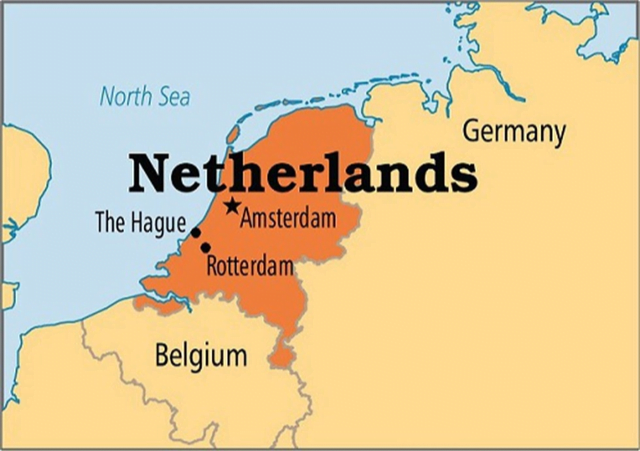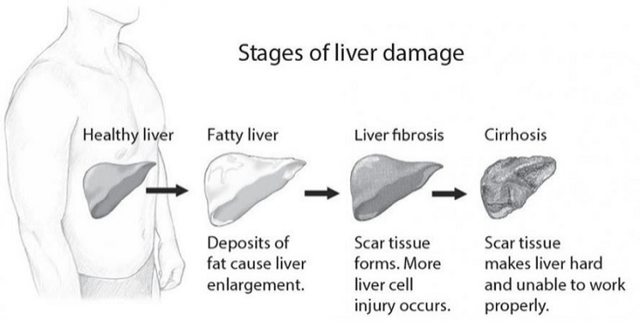IASbaba's Daily Current Affairs Analysis
Archives
(PRELIMS + MAINS FOCUS)
Devasthal Telescope assumes global importance
Part of: GS Prelims and GS – III – Sci & tech
In news
- The optical telescope set up at Devasthal has assumed global importance for observing important cosmic explosive events such as Gamma-Ray Bursts and Supernovae.

Important value additions
- Devasthal is a mountain peak in Uttarakhand.
- It is a world-class 3.6 m optical telescope.
- It is Asia’s largest fully steerable optical telescope.
- Set up by: Aryabhatta Research Institute of Observational Sciences (ARIES), an autonomous research institute of DST, with support from the Belgian government in 2016.
- It will also be helpful for future optical facilities such as the Thirty Meter Telescope.
Related articles:
Artisan-based SFURTI Clusters inaugurated
Part of: GS Prelims and GS – III – Economy
In news
- 50 artisan-based SFURTI clusters, spread over 18 States were recently inaugurated.
- Ministry: Ministry of MSME
- Artisans shall be supported in the traditional segments of muslin, khadi, coir, handlooms, woodcraft, pottery, carpet weaving, agro-processing, etc.
Important value additions
- Objective of Scheme of Fund for Regeneration of Traditional Industries (SFURTI): To organize traditional industries and artisans into clusters to make them competitive and increase their income.
- SFURTI clusters are of two types:
-
- Regular Cluster (500 artisans) with Government assistance of up to Rs.2.5 crore
- Major Cluster (more than 500 artisans) with Government assistance up to Rs.5 crore
- The artisans are organized into SPVs which can be:
-
- a Society registered under Societies (Registration) Act, 1860,
- a Co-operative Society under an appropriate statute,
- a Producer Company under Section 465 (1) of Companies Act, 2013 (18 of 2013),
- a Section 8 Company under the Companies Act, 2013 (18 of 2013) or (v) a Trust.
Related articles:
Central Electricity Regulatory Commission (CERC)
Part of: GS Prelims and GS- II – Polity and Governance & GS – III – Infrastructure
In news
- Central Electricity Regulatory Commission (CERC) was in news recently when Pravas Kumar Singh took oath as its Member.
Important value additions
Central Electricity Regulatory Commission (CERC)
- Established by: Government of India
- It is the Central Commission for the Electricity Act, 2003 which has repealed the ERC Act, 1998.
- Composition: Chairperson and four other Members including Chairperson, Central Electricity Authority who is the ex-officio Member of the Commission.
- Functions: (1) To regulate the tariff of generating companies owned or controlled by the Central Government; (2) To regulate the inter-State transmission of electricity; (3) To determine tariff for such transmission of electricity.
- CERC also advises the Central Government on the formulation of the National Electricity Policy and Tariff Policy.
Dutch Indian Water Alliance For Leadership Initiative (DIWALI)
Part of: GS Prelims and GS- II – International Relations & GS – III – Water Management
In news
- Dutch Indian Water Alliance For Leadership Initiative (DIWALI) was established recently between India and Netherlands
- Objective: To find solutions for water related challenges

Key takeaways
- The experts from both counties would explore the potential and sustainability of Dutch Solutions to resolve challenges in specific water-challenged sites in India.
- Scalable, sustainable, and affordable solutions shall be given importance.
- Led by: Dutch consortia titled “Water for Change. Integrative and Fit-for-Purpose Water Sensitive Design Framework for Fast-Growing Livable Cities” and IIT Roorkee as the lead and other consortia members – MANIT, Bhopal; CEPT University, Ahmedabad; IIT Gandhinagar; CWRDM, Calicut.
Non-Alcoholic Fatty Liver Disease (NAFLD)
Part of: GS Prelims and GS- II – Health
In news
- According to the Health Ministry, India has become the first country in the world to identify the need for action for Non-Alcoholic Fatty Liver Disease.

Key takeaways
- Operational guidelines have been launched for the integration of NAFLD with the National Programme for Prevention & Control of Cancer, Diabetes, Cardiovascular Diseases, and Stroke.
- NAFLD is an umbrella term for a range of liver conditions affecting people who drink little to no alcohol.
- Main characteristic of NAFLD is too much fat stored in liver cells.
- It is becoming increasingly common around the world, especially in Western nations.
- Some individuals with NAFLD can develop non-alcoholic steatohepatitis (NASH).
- NASH is an aggressive form of fatty liver disease, marked by liver inflammation which may progress to advanced scarring (cirrhosis) and liver failure.
Related articles:
National Family Health Survey 2020
Production Linked Incentive Scheme For Pharmaceuticals
Part of: GS Prelims and GS- III – Economy; Manufacturing sector
In news
- The Union Cabinet has approved Production Linked Incentive (PLI) Scheme for Pharmaceuticals for Financial Year 2020-21 to 2028-29.
Key takeaways
- The Scheme is expected to bring in investment of Rs.15,000 crore in the pharmaceutical sector.
- It will be part of the umbrella scheme for the Development of the Pharmaceutical Industry.
- Objective: (1) To enhance India’s manufacturing capabilities by increasing investment; (2) Product diversification to include high-value goods.
- Target Groups: The manufacturers who are registered in India will be grouped based on their Global Manufacturing Revenue (GMR) to ensure wider applicability of the scheme
- Quantum of Incentive: 15,000 crores.
- Category of Goods covered:
-
- Category 1: Biopharmaceuticals; Complex generic drugs; Patented drugs or drugs nearing patent expiry; Cell-based or gene therapy drugs; Orphan drugs; Other drugs as approved.
- Category 2: Active Pharmaceutical Ingredients, Key Starting Materials, Drug Intermediates.
- Category 3: Drugs not covered under Category 1 and 2.
Related articles:
Expansion of Production-Linked Incentive Scheme
PLI For Large Scale Electronics Manufacturing
(Mains Focus)
FEDERALISM/ SOCIETY
Topic:
- GS-2: Functions and responsibilities of the Union and the States, issues and challenges pertaining to the federal structure, devolution of powers and finances up to local levels and challenges therein.
Federalism and India’s human capital
Context: Investing in human capital through interventions in nutrition, health, and education is critical for sustainable growth.
India’s Human Capital
- In the World Bank’s Human Capital Index, the country ranked 116th.
- The National Family Health Survey-5 for 2019-20 shows that malnutrition indicators stagnated or declined in most States.
- The National Achievement Survey 2017 and the Annual Status of Education Report 2018 show poor learning outcomes. There is little convergence across States.
- India spends just 4% of its GDP as public expenditure on human capital (around 1% and 3% on health and education respectively) — one of the lowest among its peers.
Various government initiatives in this regard -like Mission Poshan 2.0’ and the Samagra Shiksha Abhiyan – are not leading to better outcomes. One reason may be India’s record with decentralisation.
- Globally, there has been a radual shift in the distribution of expenditures and revenue towards sub-national governments.
- These trends are backed by studies demonstrating a positive correlation between decentralisation and human capital.
- In recent years, India has taken some steps towards decentralisation. The Fourteenth Finance Commission increased the States’ share in tax devolution from 32% to 42%, which was effectively retained by the Fifteenth Finance Commission.
Issues
- Lack of Devolution of Powers: Many States do not clearly demarcate or devolve functions for panchayats and municipalities
- Disparities in role of Local Bodies: The 73rd and 74th Amendments bolstered decentralisation by constitutionally recognising panchayats. However, the Constitution lets States determine how they are empowered, resulting in vast disparities in the roles played by third-tier governments.
- Issue with Article 282: Article 282 of the Constitution is listed as a ‘Miscellaneous Financial Provision’, unlike Articles 270 and 275, which fall under ‘Distribution of Revenues between the Union and the State. Article 282 is normally meant for special, temporary or ad hoc schemes.
- Issue with Centrally Sponsored Schemes (CSSs): These typically have a cost-sharing model, thereby pre-empting the States’ fiscal space.
- Third-tier governments are not fiscally empowered. The collection of property tax, a major source of revenue for third-tier governments, is very low in India (under 0.2% of GDP, compared to 3% of GDP in some other nations).
- Institutional Failure: Many States have not constituted or completed State Finance Commissions (SFCs) on time.
Way Ahead
- Centre should play an enabling role, for instance, encouraging knowledge-sharing between States.
- For States to play a bigger role in human capital interventions, they need adequate fiscal resources.
- States should rationalise their priorities to focus on human capital development.
- The Centre should refrain from offsetting tax devolution by altering cost-sharing ratios of CSSs and increasing cesses.
- Heavy reliance on CSSs should be reduced, and tax devolution and grants-in-aid should be the primary sources of vertical fiscal transfers.
- Panchayats and municipalities need to be vested with the functions listed in the Eleventh and Twelfth Schedules.
Conclusion
- Leveraging the true potential of our multi-level federal system represents the best way forward towards developing human capital.
Connecting the dots:
- Competitive and Cooperative Federalism
SOCIETY
Topic:
- GS-1: Diversity of India and challenges to it
Endangered Languages
- There are 7,000 living languages in the world and around 3,000 are considered as ‘endangered’. This means that almost half of the planet’s current linguistic diversity is under threat.
- The situation in India is alarming. Some 197 languages are in various stages of endangerment in our country, more than any other country in the world.
- India may have lost 220 languages since 1961. There were 1,100 languages since 1961, based on the Census number of 1,652 mother tongues. Another 150 languages could vanish in the next 50 years.
What happens when a language dies?
- When a language declines, that knowledge system is completely gone. With the loss of language comes the loss of everything in culture and loss of solidarity.
- When a language dies, its speakers decide to migrate. First, they migrate to another language and then they physically start migrating to another region.
- The second thing that happens is that their traditional livelihood patterns go down. They may have some special skills and that disappears.
- Thirdly, a unique way of looking at the world disappears. Every language is a unique worldview.
Mother Tongue Based Multi-Lingual Education (MTBMLE)
- It could play a key role in preserving tribal languages, claim linguistic experts.
- Ignoring mother tongue- based intervention in early childhood for tribal children could potentially impede the early childhood learning process.
Way Ahead
- Tribal languages should be endorsed through innovative, cultural and entertainment programmes, suggest linguistic experts.
- There is a need to promote tribal languages as a medium of communication and education in tribal-dominated districts. It can significantly reduce the communication gap and school dropout rate.
- It is important to integrate indigenous knowledge systems alongside modern sciences in the curriculum of schools.
- Tribal languages are fundamental to understand the world we live in, our origin, the roots that we all came from and what humans are capable of.
- We need to create livelihood support for the speakers of the language. If they have livelihood available within their language, nobody would want to switch from their language to any other language.
Connecting the dots:
- Challenges of non-scheduled languages
- Yuelu Proclamation
(TEST YOUR KNOWLEDGE)
Model questions: (You can now post your answers in comment section)
Note:
- Correct answers of today’s questions will be provided in next day’s DNA section. Kindly refer to it and update your answers.
- Comments Up-voted by IASbaba are also the “correct answers”.
Q.1 Cirrhosis is a disease of which of the following organ of the human body?
- Liver
- Kidney
- Heart
- Skin
Q.2 Consider the following statements:
- National Bamboo Mission was launched by the Ministry of Micro, Small, and Medium Enterprises (MSME).
- Scheme of Fund for Regeneration of Traditional Industries (SFURTI) was launched by the Ministry of Finance.
Which of the above is/are correct?
- 1 only
- 2 only
- Both 1 and 2
- Neither 1 nor 2
Q.3 DIWALI partnership was recently signed between India and Netherlands. It is related to which of the following?
- Student exchange program
- Solutions for water related challenges
- Natural gas pipeline
- Waste management
Q.4 Which of the following is/are covered under Production Linked Incentive (PLI) Scheme?
- Advance Chemistry Cell (ACC) Battery
- Electronic/Technology Products
- Automobiles & Auto Components
- Pharmaceuticals drugs
Select the correct code:
- 1 and 2 only
- 4 only
- 2, 3 and 4 only
- 1, 2, 3 and 4
ANSWERS FOR 24th February 2021 TEST YOUR KNOWLEDGE (TYK)
| 1 | C |
| 2 | D |
| 3 | B |
| 4 | C |
Must Read
On vaccine reluctance and vaccine hesitancy:
On structural fragility of Union Territories:
About asymmetrical recovery:














